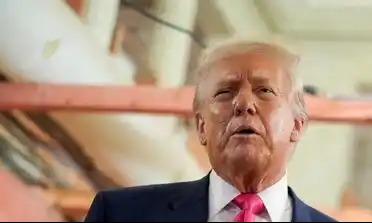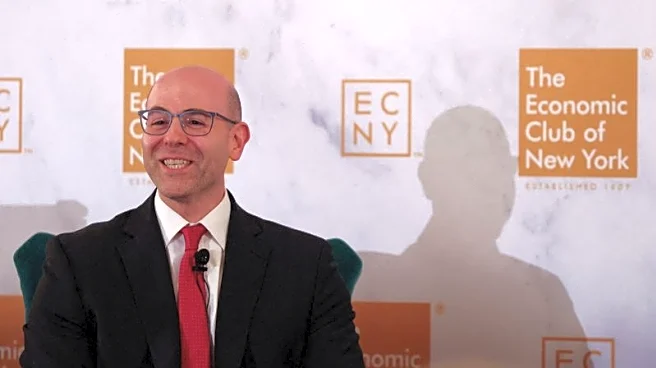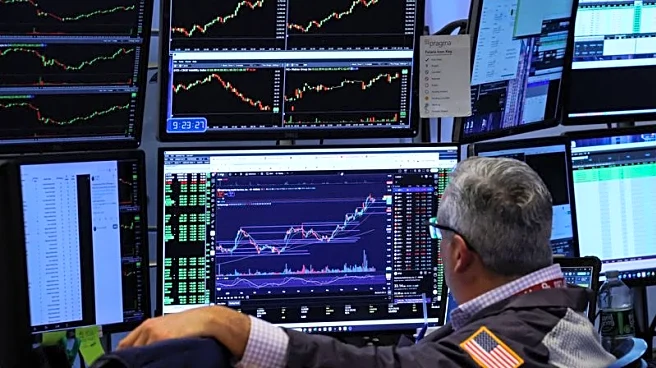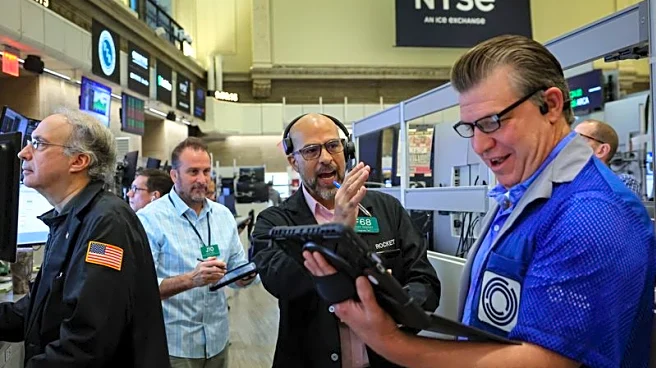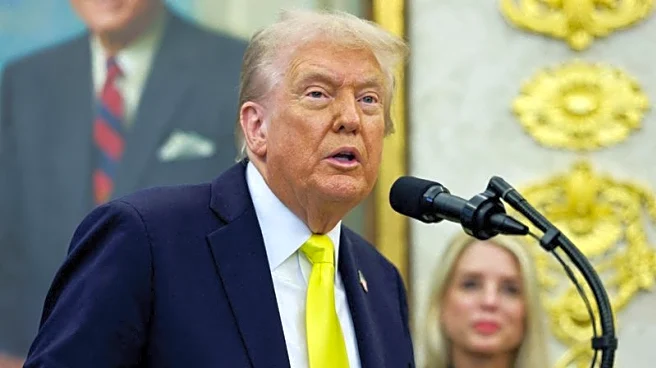By Howard Schneider and Ann Saphir
WASHINGTON (Reuters) -The historically routine process of reappointing the Federal Reserve's 12 regional bank presidents is being watched for signs of becoming the newest
challenge to the U.S. central bank's independence, as President Donald Trump seeks more influence over interest rates and other policies.
The twice-a-decade proceeding ordinarily occurs without controversy and produces the same result: The regional bank chiefs are reappointed by a majority of the Fed's Board of Governors in Washington.
But the surprise retirement announcement on Wednesday by Atlanta Fed President Raphael Bostic, not long after the reappointment vetting had started, has cast fresh light on the process, coming as it does just two months after Trump moved to boost his sway at the central bank by trying to fire Fed Governor Lisa Cook.
Trump is also likely just weeks away from nominating his own choice to run the entire U.S. central bank system, with current Fed Chair Jerome Powell's term set to expire in May.
In the Atlanta Fed's case - as it is with the other 11 regional banks - its own board of directors, not Trump, will choose Bostic's replacement, but the choice must be approved by a majority of the Fed's seven-member board where most of Trump's efforts to expand his reach have been focused.
Three of the current seven members are appointees of former President Joe Biden and three are Trump appointees, including a slot he filled two months ago with a member of his White House economics team after an earlier surprise departure by a Fed governor. Powell, routinely disparaged by Trump, came to the Fed during the Obama administration, was elevated to the top central bank job by Trump and then reappointed by Biden.
It remains unclear how deeply the administration plans to assert itself into the regional Fed bank reappointments, due to be completed before the current terms end in February.
The White House did not immediately respond to questions about Trump's preferences.
'COULD LEAD TO A REAL CHANGE'
The reappointment process for regional Fed bank presidents, with their initial vetting and hiring typically the product of national talent hunts, has been close to a rubber stamp. But a legal opinion crafted during Trump's first term in the White House argues the Fed's board has wide sway to replace the regional presidents, providing a possible next step in Trump's efforts to expand presidential influence over the central bank.
Five of the regional bank presidents vote each year on interest rate policy on the 12-member Federal Open Market Committee, part of the central bank's power-sharing structure and Trump's main focus in his criticism of the institution. The regional staff also supervise the banks under their jurisdiction, and drive much of the Fed's broad research agenda.
The authority of central banks to set interest rates independent of direct political influence - including from the threat of being fired by elected officials over policy disagreements - is among the more deeply held bits of economic orthodoxy, backed by research showing economic outcomes tend to get worse as central bank independence is eroded.
A successful ouster of regional Fed presidents and influence over the choice of their successors "could lead to a real change in the way monetary policy is formulated," Lev Menand, an associate professor at Columbia Law School, said during a discussion last month about central bank independence at the Peterson Institute for International Economics in Washington.
It likely would provoke a messy legal battle that entangles not just the regional Fed presidents but the dozens of business executives, bankers and community leaders who serve on their boards.
But Trump has not avoided pushing such boundaries.
Cook's case is the first-ever move by a president to fire a Fed board member, and he has been unrelenting in his criticism of Powell and demand for lower interest rates.
The Cook dispute is currently before the U.S. Supreme Court, where justices have already acknowledged that the Fed's unique structure distinguishes it from other independent agencies whose leaders Trump has been allowed to remove. A hearing is expected in January.
PROCESS IS UNDERWAY
The Fed regional presidents, however, fall into a different category and are potentially susceptible to being fired "at will" as Trump appoints allies to the Fed board.
One high-ranking Trump official laid out the rationale during his first term.
"The power of the Board of Governors to remove Reserve Bank presidents at will tracks the constitutional and statutory default: the Board of Governors, as the appointing authority, also has the removal power," then-Deputy Assistant Attorney General Henry Whitaker argued in a 2019 memo analyzing the constitutionality of Fed reforms proposed by Republican members of Congress.
"Subjecting the Reserve Bank FOMC members to removal at will does not threaten the mechanism Congress chose for protecting the independence of the Federal Reserve System as a whole," wrote Whitaker, who currently is a counselor to U.S. Attorney General Pam Bondi. "The members of the Board of Governors remain tenure-protected, even if their subordinates serving on the FOMC are not."
Beyond Bostic's retirement, the current slate of presidents may not change much for now, particularly if Cook is allowed to keep her job.
Bostic, 59, the first Black and openly gay Fed regional bank president, is more than five years shy of the Fed's mandatory retirement age. But he is among those considered by conservatives as emblematic of a "woke" central bank for his occasional outspoken stance on racial and economic justice issues. He was cited as well by the Fed's in-house Inspector General last year for creating both the appearance of trading on confidential information and the appearance of a conflict of interest based on his management and reporting of personal investments.
Asked about the upcoming reappointments, Powell told reporters after last month's policy meeting that "we're in the middle of that process and we're going to complete it in a timely way."
Trump's newest Fed appointee, Governor Stephen Miran, is expected to return to the White House early in 2026, and it is not clear how far Fed Vice Chair for Supervision Michelle Bowman and Fed Governor Christopher Waller, both now well established at the central bank, would go in trying to force out any of the regional bank presidents.
The dozen Fed regional presidents are a diverse lot who include former high-ranking executives from firms like Goldman Sachs and McKinsey, longtime Fed staffers who rose through the ranks, economists with PhDs, and former officials in Republican and Democratic administrations.
At the most recent such vote, on January 15, 2021, Trump nominees held a board majority, but the reappointments were unanimously approved, as have all such reappointments in recent decades, Fed records show.
Yet as Trump appoints more board members, with Powell potentially leaving the central bank altogether when his term as Fed chief ends and Fed Vice Chair Philip Jefferson facing the same decision in September 2027, the pressure could build.
Derek Tang, an analyst with forecasting firm LH Meyer who has written frequently about the Fed's political context, believes all current regional bank presidents will be reappointed in the current round, but feels the threat of removal will remain.
"After all, Fed governors can move to remove a (Fed bank) president," he said. "The fact that a light is being cast on this issue is itself a warning sign that Fed independence is not safe."
(Reporting by Howard Schneider; Additional reporting by Ann Saphir; Editing by Dan Burns and Paul Simao)
